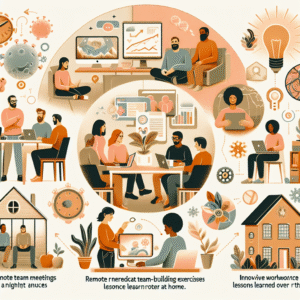Harnessing AI Trends for Competitive Advantage in 2025

Harnessing AI Trends for Competitive Advantage in 2025
Artificial Intelligence (AI) is advancing at a blistering pace, fundamentally transforming how businesses operate. As we look ahead to 2025, the most successful organizations will be those that not only keep up with AI trends but proactively leverage them to drive competitive advantage. In this article, we outline the key AI trends for 2025 and offer practical strategies for harnessing them in your business.
1. AI-Powered Personalization: Elevating the Customer Experience
Personalization has long been a competitive differentiator, but in 2025, AI takes it to new heights. Advanced machine learning models analyze massive datasets—including real-time behavioral data—to tailor recommendations, content, and digital experiences down to the individual level. Businesses deploying AI-driven personalization see higher engagement, increased conversion rates, and stronger brand loyalty.
Action Steps:
- Integrate AI-powered analytics tools with your CRM to create dynamic, personalized customer journeys.
- Leverage chatbots and virtual assistants to provide real-time, context-aware support.
- Use AI to segment audiences based on micro-behaviors and target them with tailored messaging.
2. Generative AI: Unlocking New Creativity and Productivity
Generative AI, best known for creating text, images, code, and even music, will continue to revolutionize content creation in 2025. Businesses are increasingly adopting generative AI for rapid prototyping, marketing collateral, automated reporting, and even product design, dramatically improving productivity and creativity while reducing costs.
Action Steps:
- Experiment with AI-powered tools like ChatGPT, DALL-E, or industry-specific platforms to automate content creation.
- Empower your teams to use AI for brainstorming, idea generation, and rapid iteration on new concepts.
- Adopt best practices for human-AI collaboration to maintain quality, compliance, and brand voice.
3. AI-Driven Automation: Rethinking Efficiency
AI automation is no longer limited to repetitive back-office tasks. In 2025, intelligent automation will extend across the enterprise, from supply chains and logistics to marketing, sales, and compliance. AI will detect anomalies, optimize workflows, and make real-time decisions, freeing employees to focus on higher-value activities.
Action Steps:
- Identify key processes within your organization that could benefit from intelligent automation.
- Conduct pilot projects to assess ROI and scalability before rolling out wider automation plans.
- Invest in upskilling and change management to ensure employees thrive alongside AI.
4. Enhanced AI Transparency and Ethics
As AI systems become more pervasive, calls for transparency, fairness, and accountability are louder than ever. In 2025, organizations are expected to demonstrate responsible AI practices, meeting regulatory and consumer demands for explainability and ethical AI use.
Action Steps:
- Adopt transparent AI models that provide audit trails and clear decision logic.
- Create an AI ethics committee or appoint AI governance leaders to oversee responsible deployment.
- Communicate openly with customers about how AI is used and protect their data privacy.
5. AI-Enabled Adaptability: Thriving in Changing Markets
Uncertainty and rapid market shifts are the new normal. AI models that continuously learn from new data give businesses the agility to anticipate trends, adapt strategies, and respond proactively to market changes. Predictive analytics, scenario planning, and market intelligence powered by AI help organizations stay one step ahead.
Action Steps:
- Deploy predictive AI tools for demand forecasting, market analysis, and risk assessment.
- Establish feedback loops where AI models are regularly updated with the latest market and operational data.
- Foster a culture of experimentation to quickly validate new strategies identified by AI insights.
6. AI Integration with IoT and Edge Computing
With the expansion of the Internet of Things (IoT) and edge computing, AI is increasingly being deployed outside traditional data centers. In 2025, real-time AI processing on edge devices enables faster decision-making, enhanced security, and new use cases—from smart factories to real-time healthcare monitoring.
Action Steps:
- Explore edge AI solutions for scenarios requiring real-time analysis and low latency responses.
- Partner with IoT vendors who offer built-in AI capabilities.
- Prioritize data security and privacy when deploying AI at the edge.
Positioning Your Business for AI-Led Success
To gain a competitive edge in 2025, organizations must move beyond a passive adoption of AI to a proactive, strategic approach. This means:
- Aligning AI initiatives with your core business objectives.
- Building multidisciplinary teams that combine domain knowledge and AI expertise.
- Continuously monitoring the AI landscape for new opportunities and risks.
By capitalizing on these AI trends and implementing the steps above, your organization can position itself at the forefront of innovation, ready to harness AI for measurable business impact in 2025 and beyond.
Is your business ready to harness the full power of AI? Now is the time to act—before your competitors do.
* The post is written by AI and may contain inaccuracies.


